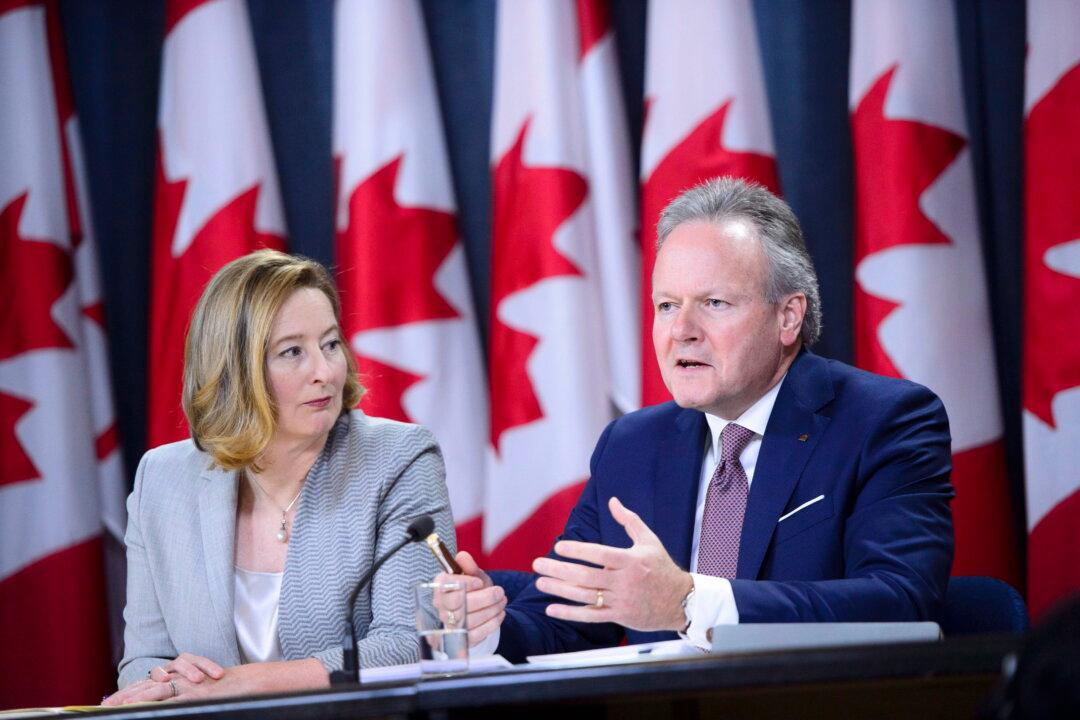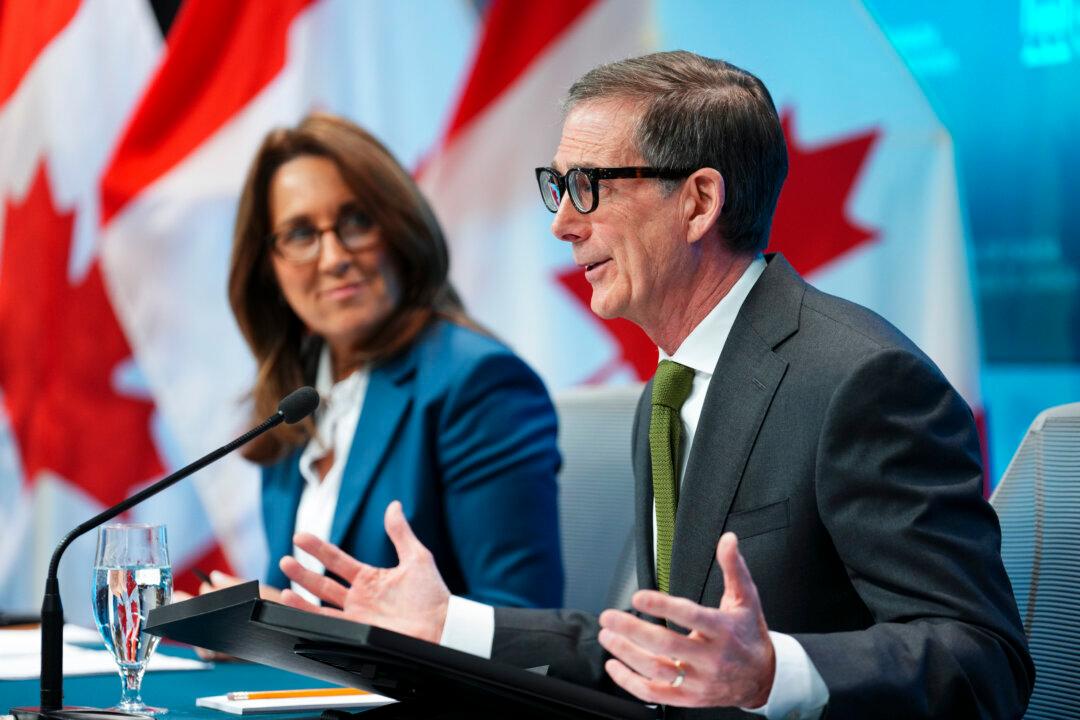OTTAWA—With the Bank of Canada’s top economic risk largely eliminated, it raised its key interest rate to 1.75 percent on Oct. 24 and dropped its “gradual approach” with regard to future rate hikes.
“The policy interest rate will need to rise to a neutral stance to achieve the inflation target,” said the central bank in its press release. The bank estimates the neutral (equilibrium) rate to be between 2.5 and 3.5 percent; therefore monetary policy at 1.75 percent is still providing a boost to the economy.
“In effect, every one of our meetings is live,” said Bank of Canada governor Stephen Poloz at the BoC’s press conference. He explained that not using “gradual” in its statement should signal that future rate hikes are not on some preordained path, which has generally been taken to imply one 0.25 percent increase per quarter.
“With the output gap closed and the uncertainty behind us, we’re calling for three rate hikes next year,” said Tony Stillo, director of Canada Economics at Oxford Economics, in an interview. “We expect the momentum to continue in the economy.”
That would put the BoC’s key rate at 2.5 percent, the lower end of its estimate of the neutral rate.
“With the economy at full capacity and inflation on target, it’s also hard to argue monetary policy shouldn’t be at a more neutral setting,” wrote RBC senior economist Josh Nye in a note.
The BoC’s core measures of inflation average 2.0 percent and have been stable for months, although headline inflation has seen some volatility due to temporary factors like a spike in airfares in the summer, a rise in gas prices, and the minimum wage hike.
The BoC is more confident in its outlook for the Canadian economy now that the United States-Mexico-Canada Agreement (USMCA) has been announced. It projects the economy to grow at roughly 2 percent until the end of 2020 and operate near its capacity.
U.S.–China Trade Tensions
The new USMCA reduces uncertainty for businesses and could bring greater positive confidence effects for the economy. The BoC upgraded its forecast slightly for business investment and exports in its quarterly monetary policy report (MPR).
But trade uncertainty still remains the biggest risk to the bank’s inflation outlook in the form of tensions between the United States and China.
“Trade conflict, particularly between the United States and China, is weighing on global growth and commodity prices,” according to the BoC press release. Chinese growth and demand have been a major driver of commodity prices for several years now.





